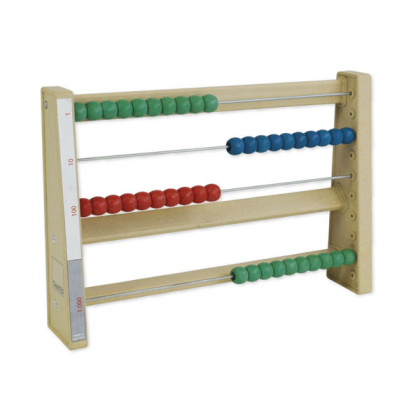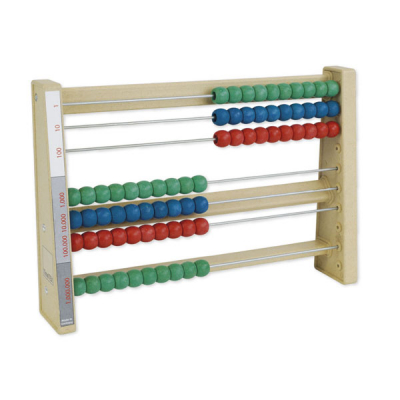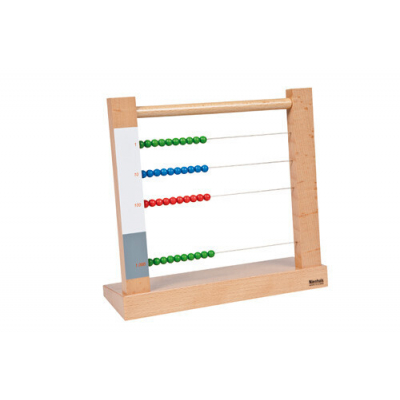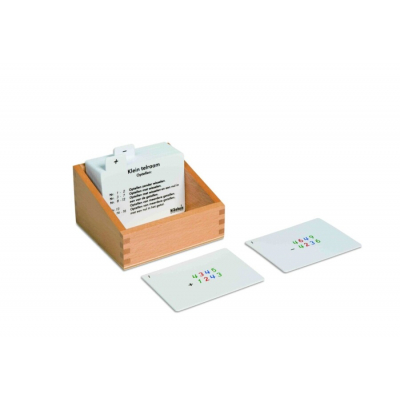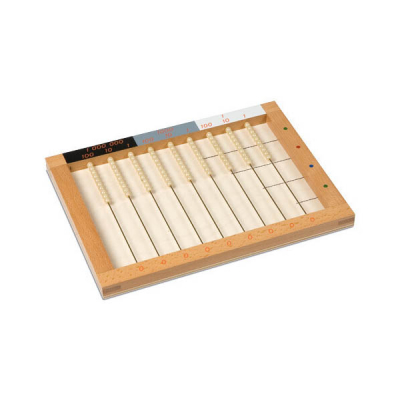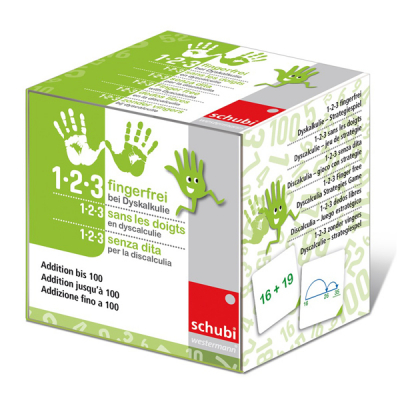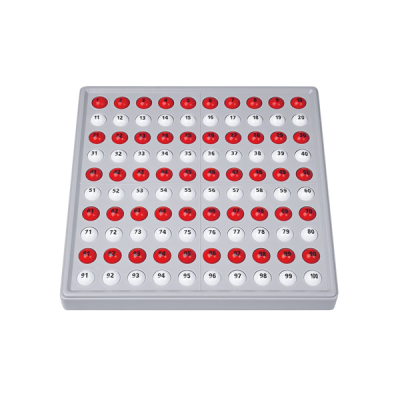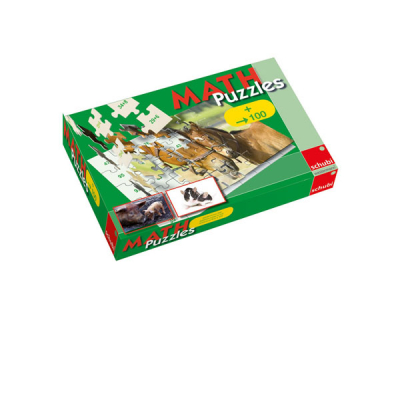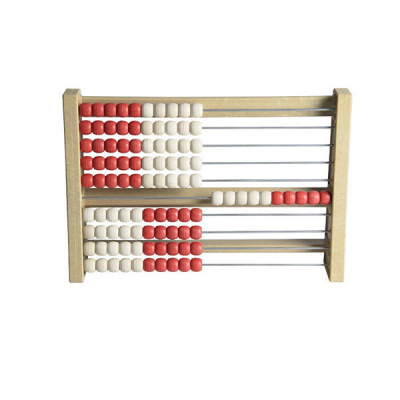Montessori abacus made from RE-Wood, 4 rows, 4 digits
The Montessori Abacus, colored according to the distinctive Montessori colors, offers beginning calculators the opportunity to work with numbers up to the thousands. Thanks to the in... Read more
The Montessori Abacus, colored according to the distinctive Montessori colors, offers beginning calculators the opportunity to work with numbers up to the thousands. Thanks to the intuitive design of the abacus, even young children can easily perform arithmetic operations such as addition, subtraction, and multiplication.
Each row on the abacus represents a specific value and has its own color. The first row stands for the units and is green, the second row stands for the tens and is blue, the third row represents the hundreds and is red, while the fourth row, which is green, symbolizes the thousands. To support and maintain a clear overview, the corresponding values are noted on the side. As a result, arithmetic problems, such as adding 2,365 and 1,562, can easily be solved by beginner calculators without any additional tools.
The color coding, based on traditional Montessori colors, also allows this abacus to be combined with other educational tools, such as the Montessori Marker Game. The frame is designed with a slight incline, making the abacus easy to view and use, whether it's standing upright or lying flat on a table. This slight tilt not only provides an optimal view for the students but also ensures that their view of the teacher is not obstructed.
This sustainable abacus is made from environmentally friendly RE-Wood®, a material that consists of 80% finely chopped wood residues from German production and 20% of a binder. This makes its production less burdensome on the environment. Moreover, it's 100% recyclable, PEFC-certified, and completely free of harmful substances, contributing to a responsible and efficient recycling cycle. Products made from RE-Wood® are known for their stability, lightness, and high usability.
With dimensions of approximately 25 x 17 x 4.5 cm and extra-large beads of about 13 mm in diameter, the Montessori Abacus is perfect for young hands. The beads offer a pleasant grip, making the calculations even more enjoyable.
Produced in Germany, this educational product is specifically intended for use under the supervision of an adult, such as a teacher, educator, or instructor. By choosing this sustainable abacus made in Germany, you contribute to responsible interaction with our planet and the environment.
- Calculate in the thousands
- large Montessori-coloured beads, pleasant to the touch
- made of environmentally friendly RE-Wood®
Learning Arithmetic with Abacuses: A Revolutionary Tool in Elementary Education
An abacus, sometimes referred to as an "arithmetic frame" or "counting frame," is central to the mathematics education of many elementary students. This versatile tool is designed to introduce young children to the basic principles of arithmetic in a visual and interactive manner. But what makes the abacus so unique, and how does it contribute to a child's mathematical understanding?
The fundamental design of a standard abacus includes ten beads on a string, divided into two sets of five. These beads are often painted in two contrasting colors, such as red and white. This color contrast not only serves as a visual stimulus but also aids children in easily recognizing and visualizing numbers. Moreover, there are abacuses with a double row of beads, allowing children to work with numbers up to twenty, further enhancing their grasp of numerical structures.
Interacting with an abacus starts simply: children learn to represent numbers up to ten or twenty by sliding a specific number of beads to one side. This provides a tangible and visual representation of each number, particularly beneficial for children just embarking on their arithmetic journey.
The real magic, however, begins when children start exploring the dynamics of addition and subtraction. Imagine a child attempting to calculate 7 + 4. Using the abacus, the child first pulls 7 beads towards them and then adds 4 more, instantly revealing the result. This method not only boosts numerical understanding but also allows children to uncover other vital concepts like double numbers, their neighbors, and the crucial "bridge to ten" strategy.
The "bridge to ten" is a core arithmetic strategy where children learn to round up to the nearest ten, simplifying addition or subtraction. The color contrast of the beads on the abacus proves invaluable here. Furthermore, children realize there are multiple ways to form a number, like seeing the number 8 as a combination of 5 + 3 or 4 + 4.
What truly sets the abacus apart is that it promotes concrete and visual learning. Instead of numbers remaining abstract concepts, they become tangible and comprehensible. This tool encourages children to think more flexibly about numbers and to realize there are diverse approaches to problem-solving. Additionally, it fosters mathematical conversations, enhancing students' communicative skills and their capacity for logical reasoning.
In conclusion, the abacus is more than just a tool; it's a gateway to the fascinating world of numbers for young learners. By translating abstract concepts into concrete, understandable terms, the abacus ensures that children lay a solid foundation in arithmetic. It's no wonder that this simple yet effective instrument has secured a prominent place in elementary education.
| SKU | TIX-6949 |
|---|---|
| EAN-/UPC-code | 4055218925856 |

